St Patrick: the legend and the bishop
Published in Features, Issue 1 (Jan/Feb 2006), St Patrick, Volume 14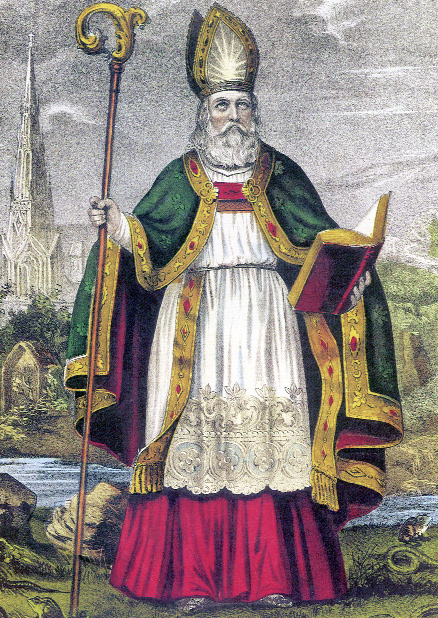
Memory is our key both to the past and to our identity, and we are usually fairly certain about the overall architecture of the edifice known as ‘our story’. Turning to Patrick—a crucial figure in Irish memory since the seventh century—memory’s headlines run like this: a young British boy from a well-off clerical family was carried off into slavery in Ireland; he later escaped, eventually became a bishop, and returned to Ireland as a missionary. He so effectively preached the Gospel that soon the whole island was Christian, and he did the job so well that within a century Ireland was a powerhouse of faith, with monasteries, scholars and missionaries of her own. And we know more about Patrick than any other fifth-century individual from these islands owing to his two surviving letters: one is now known as his ‘confession’, and the other is a letter excommunicating the soldiers of the slaver Coroticus. These writings are seen as a rugged witness to his simple holiness. Patrick is, therefore, the father of Irish Christianity, the ‘apostle of Ireland’, the ‘patron of the Irish’, and the basis for the annual festival of Irishness on 17 March.
Different histories
But memory is always layered, the product of different moments’ reflection on the past and the remnants of various periods’ attitudes to what they saw as ‘their past’. Fifty years ago most writers would have been happy to say that Patrick came to Ireland in 432, converted Ireland in a great Easter-event on the Hill of Slane near the high king’s residence, and founded the see of Armagh: both Anglican and Roman Catholic archbishops claim to be the linear and direct successor of Patrick in that city.
Today, by contrast, such statements are carefully hedged because they are first mentioned in the later seventh century—at least 200 years after Patrick (and we can only guess at Patrick’s dates by saying ‘in all probability sometime in the fifth century’).
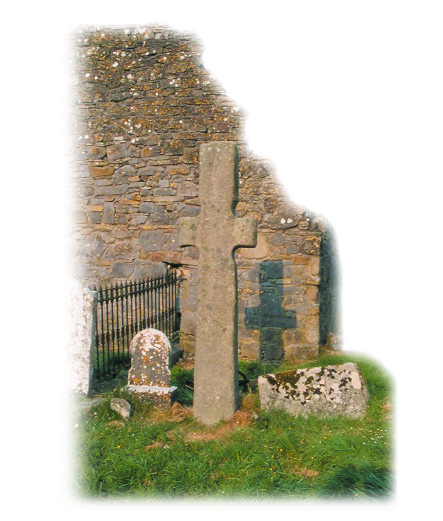
Standing cross near the ruins of Sleaty church, Co. Carlow. Aed, bishop of Sleaty, commissioned Muirchíº to write up the Patrick legend.
On the other extreme, the imagery surrounding St Patrick’s Day is such a pastiche that often people in Ireland know the story but conclude ‘that he probably never existed and it’s all lies!’ One generation’s need for a meaningful story to explain their present is the next generation’s embarrassment, yet bits from every period linger in the storehouse of images.
Untangling these layers is a fascinating human task—hence the fascination of Patrick, and hagiography in general, to a long succession of historians. This historical task is further complicated by the special place that Christians give to studies of the past within their own apologetic agenda. For many denominations this untangling has a special place not just as curiosity about the past but also as a theological task by which they establish their relationship to what they see as their ‘origins’. Often this religious agenda becomes confused with the task of the historian, or, as has often happened in the case of Patrick, is thought to be identical with historical research. The French historian Marc Bloch once wrote:
‘Christianity is a religion of historians. Other religious systems have been able to found their beliefs and their rites on a mythology nearly outside human time. For sacred books, the Christians have books of history, and their liturgies commemorate, together with episodes from the terrestrial life of a God, the annals of the church and the lives of the saints.’
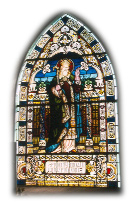
Constructing the memory of Patrick
Prior to the mid-seventh century there seems to have been little or no awareness of Patrick in Ireland, but by the end of that century a picture of Patrick had been created that remained almost unchanged and unchallenged until the 1960s. The pre-Christian religion of Ireland was a distant memory by the seventh century. When Irish writers then tried to picture it, they had so little to go on that they had to borrow from the stock descriptions of Babylonian pagans found in the Bible’s Book of Daniel. These seventh-century clerics had a thriving church, but by contrast with the church in France or Spain they did not have a spectacular and well-defined history and self-identity as a church within the family of Christians worldwide. What they needed was a history of themselves-as-a-church. This, a historia ecclesiastica (note that ecclesiastica is an adjective: it indicates a particular kind of history, and not a ‘history of the church’), was something that people like Eusebius of Caesarea had supplied for the citizens of the Roman Empire, that Gregory of Tours had supplied for the Franks, and that Bede, within a generation, would supply for the English. So who would supply one for the inhabitants of this island, and what elements would it have to contain?
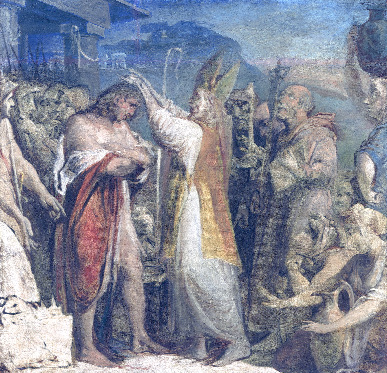
A James Barry sketch of The baptism of the king of Cashel by St Patrick (c. 1799–1801). Patrick saw himself as an eschatological preacher on the last frontier. (National Gallery of Ireland)
First and foremost, there was the notion of ‘a Christian nation’—a gens—derived from the Bible, and a belief that the whole church was made up of the nations that had been baptised (reading Mt. 28:19 literally). So there was an Irish gens greater than the feuding tribal groupings, and as a baptised nation it had a place in the history of the Age of Christ. And developing this sense of the Irish as ‘a holy nation’ (1 Pet. 2:9) was the work of a writer called Muirchú, author of the most famous Life of Patrick and one of the more elusive writers of early Christian Ireland. Apart from what we can learn from the Life, we have only one item of contemporary information about him: he was present at the Synod of Birr in 697 as one of the guarantors of the Cáin Adomnáin, indicating that at the end of the seventh century he was an important Irish churchman.
From the Life we learn that Muirchú considered himself to be following in the footsteps of Cogitosus, who earlier in the seventh century had written a Life of Brigid. Muirchú also tells us that he composed the work at the request of ‘Aed, bishop of the city of Sléibte’ (Sleaty, just outside Carlow), to whom he dedicated the work. We know little of Aed except that he placed his diocese under the protection of Patrick (i.e. Armagh) during the time that Ségéne was bishop (661–88). We know also that Aed was, along with Muirchú, one of the guarantors at the Synod of Birr, but had already relinquished office by 692 in favour of monastic life. So the Life was certainly composed prior to 700; some scholars see its purpose, in part, as fostering the assimilation of Sleaty within the jurisdiction of Armagh and so place it before 688. Muirchú’s concern with what he considers ‘his nation’ as a baptised gens has all the elements we see in Gregory of Tours’s History of the Franks or in Bede’s History of the English Nation as a Church, but for Muirchú it took the form of a Life of Patrick: a retelling of the story of Patrick to meet his needs, or in our terms a construction of the myth of Patrick.
The second element in Muirchú’s argument was a simple piece of religious logic based on his understanding of Mt. 28:19 and of the sacrament of baptism. If there is one gens (i.e. everyone on the island belongs to a single nation, a concept first found in his Life and which entitles him to be considered the first theorist of Irish nationalism), then there can be but one baptiser, and that baptiser is that nation’s apostle, and that apostle is also its heavenly protector (i.e. its patron saint). The problem was (and is) that the origins of Christianity in Ireland are very obscure: all he had to go on was a one-line reference to Pope Celestine sending Bishop Palladius from Rome in 431 (and nothing more was recorded of him) and a couple of letters from a British bishop called Patrick who worked in Ireland at a time when there were still many pagans, and whose memory was preserved in some communities for they still celebrated his anniversary on 17 March. But every church needed a history, and so from these two elements, along with a theology of conversion taken from the Easter vigil liturgy, Muirchú invented Patrick the apostle. The whole gens was baptised in a single great Easter vigil in 432 by Patrick.
Muirchú opted for Patrick over Palladius as Patrick had left a larger footprint in the store of memory. Poor Palladius was written out of the script as a failure, and Patrick presented as his duly authorised (by heaven and by Rome) successor who successfully turned the Irish into a gens sancta Dei. So can we get behind Muirchú’s theological writing up of his church’s memory?
Fragments of history
Christianity arrived in Ireland, probably in the fourth century, with slaves taken from Roman Britain: slaving was big business, as Patrick’s writing and experience show us. As elsewhere on the empire’s edges, the pastoral care of Christian slaves was a matter of concern for their home churches, who provided them with ransoms (when they could) and with clergy.
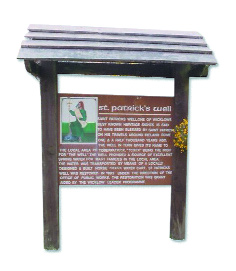
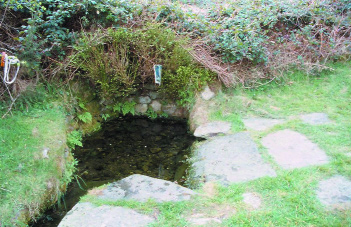
Toberpatrick near Tinahely, Co. Wicklow-wells such as this testify to the diffusion and continuity of Patrick’s cult.
By the early fifth century there were enough Christians in Ireland—certainly Romano-British slaves but probably also native converts—that a bishop was deemed to be necessary, and hence the mission of Palladius. Palladius is the unsung hero: written off by Muirchú, he probably spent an arduous life ministering in Ireland to slaves, helping them to establish themselves as a church. We know that this concern for Christians in Ireland was ongoing, as we find reference to it again during the pontificate of Leo the Great (440–61). So where does Patrick enter the story? Patrick escaped from Ireland in his early twenties, and back home in Britain followed his father and grandfather into the clergy. He gives the impression that much later, when already a bishop (probably in his 40s—he could not have become a priest until he was into his 30s), he was told in a vision to return to Ireland and preach in those areas ‘at the ends of the earth where no one had preached before’. Patrick made no claim to preach to the whole island or to be its only missionary, but only to have worked where no other missionary had gone before. But here the tale becomes complex: we only know this because other bishops attacked his personal integrity/conduct/preaching, and his defence of his ministry, the Confession, has survived. However, if you start, as our common memory has done since Muirchú’s time, with the image of Patrick as the sole apostle to Ireland, then these critics must be in Britain (as there would not be other bishops in Ireland) and their criticisms of the saint can be dismissed as just the earliest example of British people not understanding what is happening in Ireland, or the clerical jealousy of men lacking Patrick’s holy zeal. Alas, if you remove the seventh-century lens and concentrate on how Patrick presented his vision of Christianity and the ‘coming judgement’, the tale is less edifying.
Patrick—like others in the fifth century—had adopted apocalypticism, seeing the world’s end and the Second Coming as imminent. So what was holding up the judgement when the sinners would be duly punished? Basing himself on texts like Mt. 10:23, the ‘hold up’ of the return of Christ as judge was that there were still places that had not heard the Gospel. Once every place, right out to the edges, had heard a preacher, then the Second Coming could happen. Patrick saw himself as this eschatological preacher on the last frontier. He added into his text of the Creed that the judgement is ‘coming soon’, and says that ‘he baptised many, ordained many, and prepared a people’ for the end. Patrick—to his fellow bishops, probably in Ireland, who would have seen his activity at close quarters—had gone completely ‘off message’ with his unique vision of himself as the apocalyptic preacher. Yet by answering these anonymous level-headed pastors, the real founders of Irish Christianity, Patrick became the only one who left a name and any account of evangelising in Ireland!
Muirchú needed a named apostle, and Patrick was all he had. Muirchú’s first task was to edit out the disreputable bits, and then to present Patrick as a model of orthodoxy and practice—as conceived in the late seventh century—through a series of comparisons and exemplary stories; then to link him with the ruling dynasty of the day by making Patrick the founder of their church at Armagh; and lastly to show Patrick as the intercessor for the Irish in heaven. Now the Irish had a single Christian identity in the past, a tale of unity that might be an alternative to feuding families in the present, and a collective destiny in the life to come. Patrick the heretical bishop was buried, Patrick the saint was born!
Thomas O’Loughlin is Dean of the School of Humanities and Social Sciences at the University of Wales, Lampeter.
Further reading:
T. Charles-Edwards, Early Christian Ireland (Cambridge, 2000).
T. O’Loughlin, Discovering Saint Patrick (London, 2005).
















